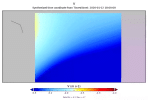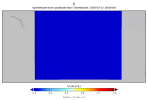junius.Wang
Member
Hello everyone, I want to know if you have a relatively complete WRF-LeS tutorial. Or is it better to apply to LES? I found a lot of documents, but there is no specific setting. I am a novice, so I need some hand-to-hand solutions. If it can have a namelist reference, it is even better. It needs your help very much!


